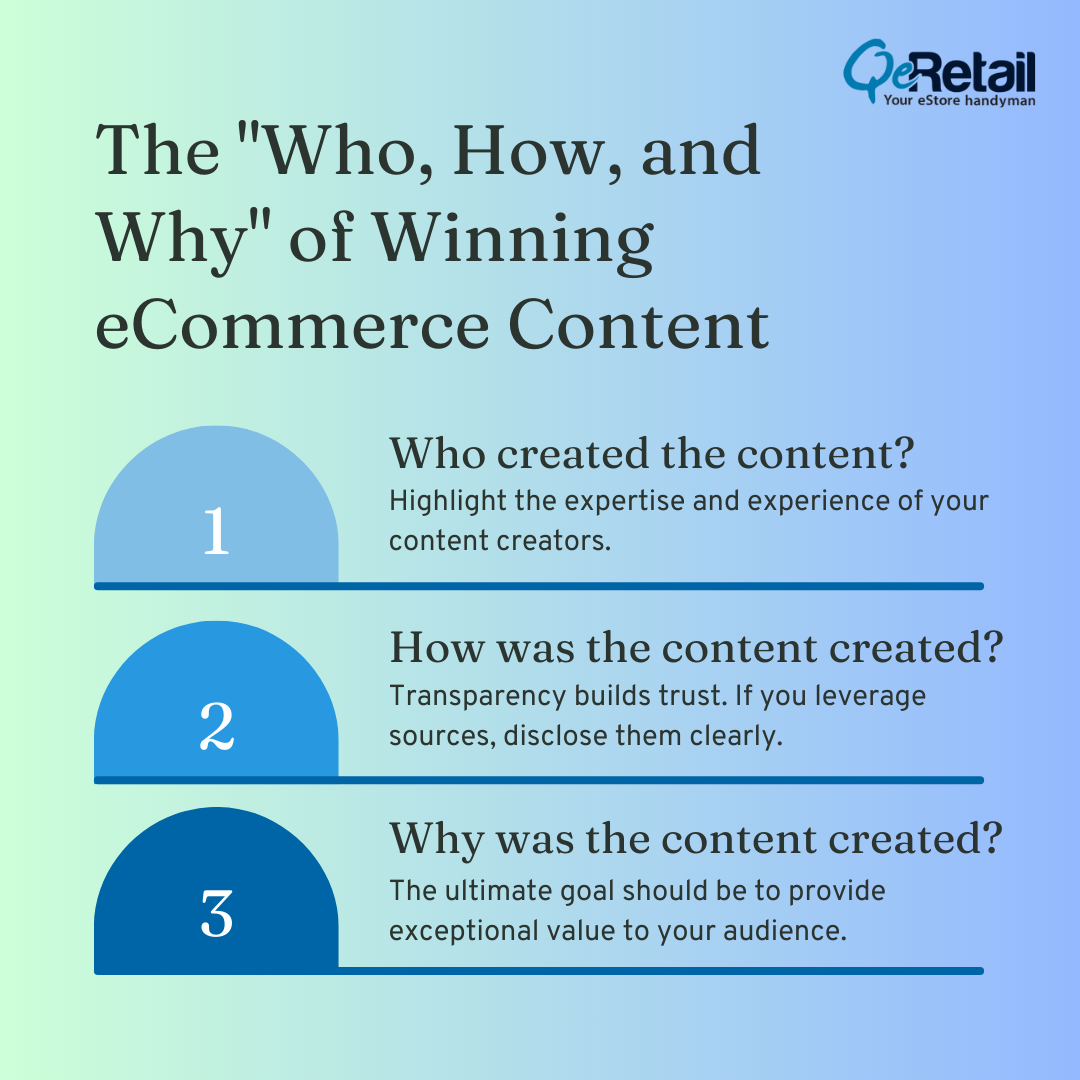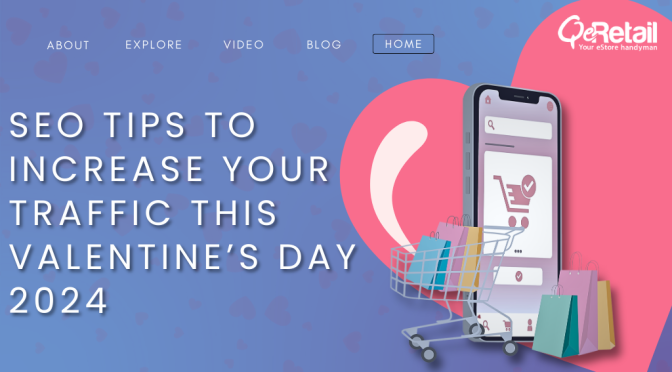How to Generate SEO-Friendly Content?
E-commerce Content Strategy – In the ever-competitive world of eCommerce, eCommerce content writing is crucial for grabbing a customer’s attention. But what if you could create content that not only attracts visitors but also converts them into loyal fans?
Over 90% of customers claim that informative content has affected their purchasing decisions. That’s the power of SEO-friendly eCommerce content that prioritizes both people and search engines.
This blog will equip you to craft eCommerce SEO optimized content that ranks well on Google and resonates with your target audience.
Creating SEO-Friendly Ecommerce Content that Converts
Before diving in, ask yourself these questions about your existing SEO friendly content:
- Ensure Content Strategy Addresses Customer Needs: Does your content address common pain points or answer questions your ideal customer has?
For example, if you sell athletic wear, consider creating blog posts like “Top 5 Tips to Avoid Chafing During Your Next Marathon” or “Ultimate Guide to Choosing the Right Sports Bra for Your Body Type.“
- Crafting Content for Clear Communication: Can visitors easily understand the information and benefits you’re offering?
Use short sentences, bullet points, and bolded text to highlight key takeaways. Avoid jargon and technical terms that might confuse your audience.
- Enhancing Content with Visual Elements: High-quality images, infographics, or videos can significantly boost engagement.
Showcase your products in action with lifestyle photography or SEO friendly content. Include clear product images with multiple angles and zoom options. Consider using explainer videos to demonstrate product features or benefits.
- Does SEO Friendly Content optimize for search? Are relevant keywords strategically incorporated to help potential customers find you?
Conduct keyword research to identify terms your target audience is searching for. Naturally integrate these keywords throughout your content, but prioritize readability over keyword stuffing.
Website with a NO-COST SEO AUDIT!
- Uncover Blind Spots
- New Keyword Opportunities
- Get Competitive Insights
- Future-Proof your eStore
 No Risk
No Risk No Obligation
No Obligation No Credit Card Required
No Credit Card RequiredEffective Ecommerce Content Strategy
Search engines like Google favor websites that demonstrate Experience, Expertise, Authoritativeness, and Trustworthiness (E-E-A-T). Here’s how to build E-E-A-T into your content:
- Author Expertise: Feature content written by industry experts or product specialists. Consider including author bios that showcase their credentials.
For instance, an online furniture store might have an interior designer create blog posts on “Space-Saving Furniture Hacks for Small Apartments” or “Choosing the Perfect Sofa for Your Lifestyle.“
- Content Quality: Prioritize in-depth, informative SEO friendly content that goes beyond basic product descriptions.
Offer buying guides, comprehensive product reviews, or trend reports relevant to your niche.
- Customer Reviews: Encourage customer reviews and testimonials to build trust and social proof.
Display positive reviews prominently on product pages and consider incorporating customer testimonials into blog posts or case studies.
Website with a NO-COST SEO AUDIT!
- Uncover Blind Spots
- New Keyword Opportunities
- Get Competitive Insights
- Future-Proof your eStore
 No Risk
No Risk No Obligation
No Obligation No Credit Card Required
No Credit Card RequiredBalancing User Experience and SEO
There’s a difference between optimizing for search and prioritizing search engines over your audience. Here’s a breakdown to help you identify your approach:
Prioritizing User Engagement and Search Visibility
- Focuses on customer intent: Anticipate customer questions and buying journey stages with targeted SEO friendly content.
Intuitive eCommerce content writing will help you to create informative landing pages for those just starting their research (“The Different Types of Running Shoes Explained“), product comparison guides for those nearing a decision (“Headphones A vs Headphones B: A Detailed Comparison“), and helpful FAQs to address post-purchase concerns (“How to Clean Your Yoga Mat“).
- Offers valuable resources: Create informative guides, how-to articles, or product comparisons to establish yourself as a helpful resource.
Develop blog posts like “5 Easy Summer Hairstyles for Short Hair” (for a haircare brand) or “The Ultimate Guide to Planning Your Dream Kitchen Renovation” (for a home improvement store).
- Prioritizes user experience: Ensure your SEO friendly content is mobile-friendly, easy to navigate, and visually appealing.
Use a clean and responsive website design that looks good and functions flawlessly on all devices. Include clear calls to action and make it easy for visitors to find the information they need.
Maintaining Balance in Content Optimization
- Reads unnaturally: Content is overloaded with keywords, sacrificing readability for search engine ranking attempts.
Imagine a running shoe description that reads: “These comfortable, lightweight running shoes for men provide superior cushioning and breathability for a smooth, supportive run. Perfect running shoes for men seeking maximum performance.” This is keyword stuffing at its worst.
- Offers little value: Focuses on manipulating search results instead of providing genuine customer benefits.
SEO friendly content solely focused on ranking and convert visitors. People want valuable information and engaging experiences.
- High bounce rates: Visitors leave quickly due to a lack of valuable or engaging content.
If your content fails to capture a visitor’s interest within seconds, they’ll likely bounce and search elsewhere.
Website with a NO-COST SEO AUDIT!
- Uncover Blind Spots
- New Keyword Opportunities
- Get Competitive Insights
- Future-Proof your eStore
 No Risk
No Risk No Obligation
No Obligation No Credit Card Required
No Credit Card Required“Who, How, and Why” of Successful SEO Content

- Who created the content? Highlight the expertise and experience of your content creators.
Feature author bios that detail their qualifications and background. This builds trust and establishes your brand as an authority in your niche.
For example, an online camera store might have a blog post on “Top Photography Tips for Beginners” written by their in-house photographer. The bio could mention their years of experience, awards won, or photography style.
- How was the content created? Transparency builds trust. If you leverage AI tools for research or content generation, disclose it clearly.
Explain your content creation process, especially if you use AI for tasks like keyword research or generating initial drafts. Emphasize that human experts review and edit the content to ensure accuracy and quality.
- Why was the content created? The ultimate goal should be to provide exceptional value to your audience and establish yourself as a trusted authority in your niche.
Focus on creating content that educates, entertains, and ultimately helps your target audience make informed purchasing decisions. By prioritizing user needs and building trust, you’ll convert more visitors into loyal customers.
In Conclusion
- Balance SEO best practices with a people-centric approach, emphasizing writing SEO friendly content. Incorporate relevant keywords naturally, but prioritize creating informative and engaging content.
- Content is an investment. High-quality content takes time and resources to create, but it pays off in the long run by attracting organic traffic, boosting conversions, and establishing brand loyalty through a well-executed eCommerce content strategy.
- Track and analyze your results. Use website analytics tools to monitor your content’s performance and identify areas for improvement.
By following these tips and writing compelling eCommerce content that resonates with both search engines and your target audience, you can turn your eCommerce store into a content marketing powerhouse.
To stay ahead of the competition with more such tips and tricks, sign up for our newsletter.
If you want eCommerce SEO experts from QeRetail to evaluate your eCommerce website for technical SEO issues, then claim your free SEO audit, at no cost and no obligation.
Website with a NO-COST SEO AUDIT!
- Uncover Blind Spots
- New Keyword Opportunities
- Get Competitive Insights
- Future-Proof your eStore
 No Risk
No Risk No Obligation
No Obligation No Credit Card Required
No Credit Card Required






